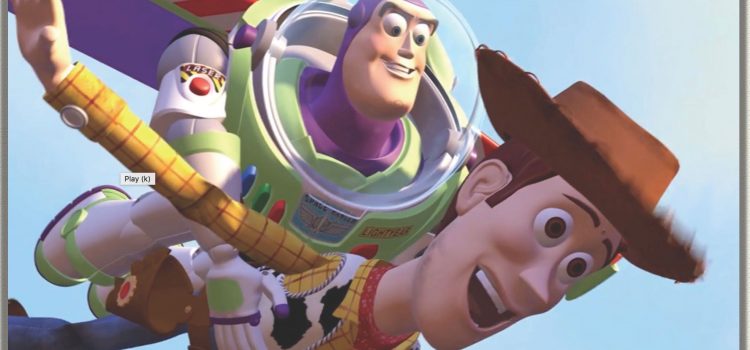
Can you answer this question: What is the theme in writing your story? Sometimes the main idea can become muddy. This article will help you pinpoint your theme. At the end, I will use Toy Story I as an example. Keep reading for practical pointers to help you state your theme and artfully hail back to it.
To give an idea of the danger, I once sat at a writer’s conference with a man who had written a full draft of an epic novel. When I asked what it was about, he gave me many plot points. After listening I responded with intense curiosity, “I would love to hear what the heart of this story is for you, and what it is really about in your mind.”
During the course of the evening, we dug deeper into his book and I kept probing, “What is it you most want to say with this book? Why this book, this story?” Then magic happened. Tears welled up in his eyes and he shared the most poignant experience of his life that happened in the middle of the night in a faraway village. I was deeply touched.
Then he said, “This whole book is really about what happened that night. The thing is, I got so caught up in writing the plot that I forgot.” That was a writing moment I will never forget, namely that it’s all too easy to forget the main point.
As we left the conference, he asked, “How did you know to ask me those questions?” I shrugged at the time, but thought about this man a lot afterward. Perhaps it was because I have grappled with theme in my own stories, which led me to study how this all works. Now I’ve come to believe that theme is the glue in a story.
Oh, and one note before we continue. This article is part of a series on writing personal stories and it assumes a basic familiarity with storyboarding. If you’d like to review, here are related topics we have already covered:
- How to Storyboard – click here to read
- Story Structure – click here to read
- What is your purpose and how does it relate to the theme of your story?
Theme is so important that when I made my storyboard template (see pic below) I put a blank line for “theme” right at the top. Here is a visual for what the storyboard looks like. Notice the line for theme right at the top:
What is so important about this story?
In short, what is so important about this story that your character is about to embark on a life-changing journey? What do you have to say that has lit a big enough fire in you to spend all this time planted in a chair? Whatever that important thing is, that’s your theme.
The late, great screenwriting master, Blake Snyder, said this:
“What’s the problem? Why do we need to send them (characters) on the most important adventure that ever happens in their lives? It’s to change them, and that’s why we want to see these stories. It goes back to the divine. You know, all stories are about transformation and transformation is about rebirth. The old way of life has got to die, and you’ve got to find a new way to live. And we can hear that story forever.”
Related article: Story endings – the transformative power of storytelling
At what point should you worry about the theme in writing your story?
Here is the big question for you, right this minute: Do you have a clear idea of the theme in writing your story? If not, don’t panic. It certainly helps to know what the over-arching theme is right up front, but it isn’t essential.
If your story has not fully revealed itself, that is okay. Maybe you are a seat-of-your pants writer (“panster” vs. “plotter”) or you believe that ideas are discovered by creatives rather than invented. If this is your style, you may need to follow the trail a bit before storyboarding it. That’s cool. The theme may not even be clear until you have a first draft. Once you have it down on paper, you can go back and make sure the theme is clear in all the important places.
In other words, you totally have my permission to just let ‘er rip now and save the analysis until later. (Okay, I know that is funny to say because you do not need my permission or anyone else’s. It’s just that I have noticed when I teach classes that students sometimes need to hear these words).
In a longer biography or memoir I freely admit that I usually just explore and meander for a while. I do a number of interviews and spend time in research before the theme emerges. Then, once I have a grasp of the whole story, my very favorite day in the writing process comes when I finally sit down to sketch all the pieces onto the storyboard. By this time, I have gained a clear idea of the big picture, and the storyboard helps make sure the main idea comes through. This exercise always sparks my creativity and leaves me feeling exhilarated.
Beware of having too many themes in your story
Something else the storyboard forces me to do is narrow down the theme to one or two main ideas. You might have some sub-themes in a longer work such as a book, but beware of having too many main ideas. This is a trap I regularly fall into. Namely, I try to say too much. My stories always get better when I make hard choices of what to cut and stay focused on the main point. This is, after all, the “why” of the whole story and it deserves to not be forgotten.
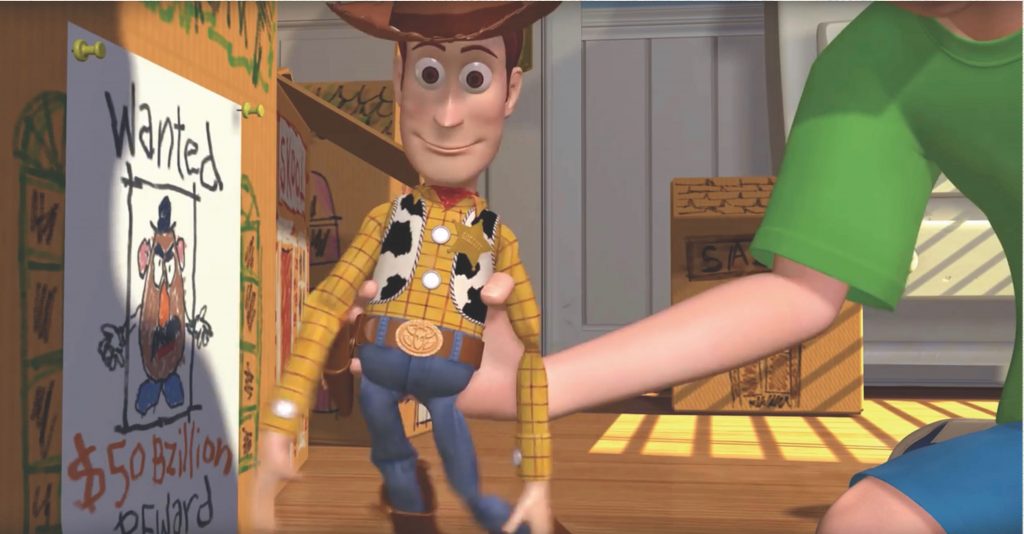
The Theme of Toy Story I
Now let’s get to analyzing Toy Story 1. In my opinion, the theme of Toy Story 1 is “selfless friendship.” You could say it in different words, but you get the idea. This theme shines through in the way that Woody remains loyal to Andy, and how some of Woody’s friends (Bo and Slink) continue to love him, even after he is implicated in the terrible deed of pushing Buzz out the window. Woody has a thing or two to learn, however. He faces abandonment by his gang of friends, jealousy when they seem to like Buzz better, and the drive to save his own skin.
He is a relatable character in spite of, or perhaps because of his flaws because he comes by them honestly enough. (Have you ever felt replaced by the latest model?)
Woody will learn how to receive help, and he will become part of a strong bond formed when two friends each sacrifice for the other.
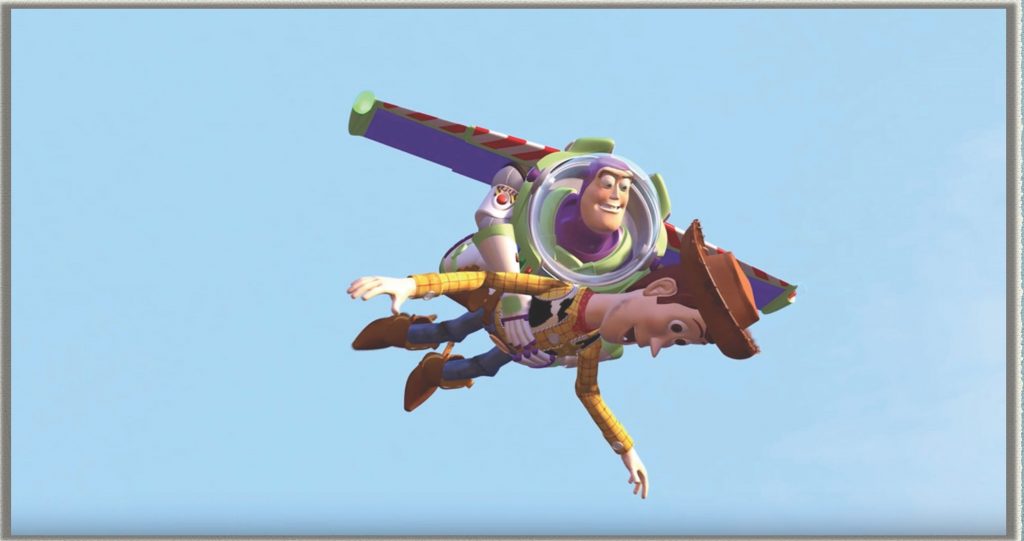
Every beat of the story relates to the theme
The theme of your story should shine throughout your story and the screenwriters for Toy Story I did that. In the exercise below, I examine every beat in this film. Note: In Hollywood parlance a beat is the smallest unit of measurement in a story. Here I mean beat as an emotional moment or short scene in a story. My story structure template has 12 beats that log the major moments in a story’s plot line.
Note that what I outline below isn’t a full storyboard or outline; it simply focuses on the idea of how the theme shines in each beat.
Beat #1 – Hero Before
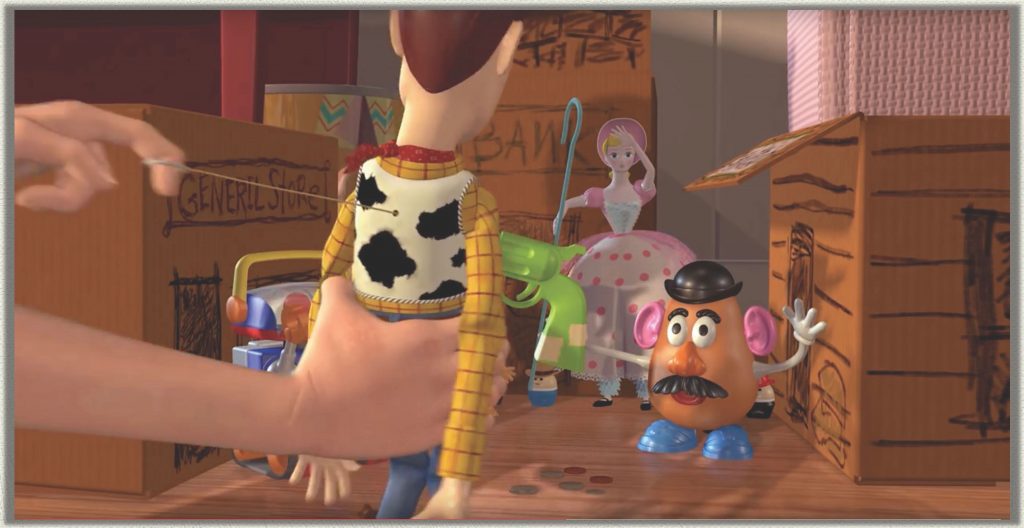
While Andy acts scenes with his toys the song, You’ve got a Friend in Me, by Randy Newman plays. They call it a theme song for a reason, folks, and it gives us an idea what the story is about. Some of the lyrics say:
“There isn’t anything I wouldn’t do for you. We stick together, we can see it through, ‘cause you’ve got a friend in me.”
Beat #2 – That’s what it’s all about
One of the great techniques in Hollywood is to have one of the characters state the theme directly through dialogue in Beat 2. That’s exactly how the screenwriters in Toy Story I did it. Woody calls a staff meeting to alert the toys about Andy’s birthday party and in his speech he summarizes the essence of selfless friendship:
“It doesn’t matter how much we’re played with. What matters is we are here for Andy when he needs us.”
Beat #3 – We have a problem
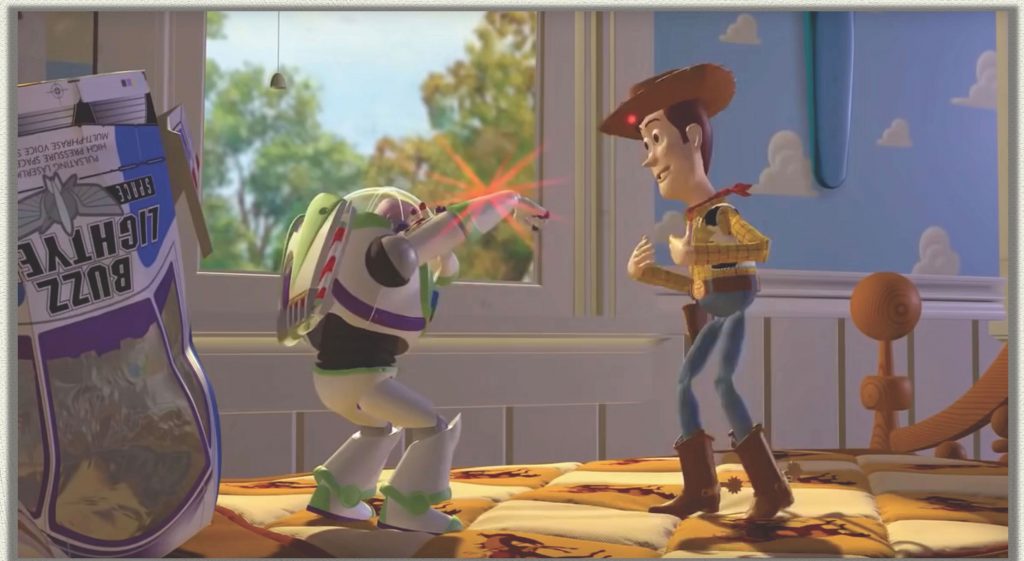
Andy receives a Buzz Lightyear action figure and Woody’s feelings are hurt when Andy sets Woody aside. The rest of the toys are impressed, but Woody’s jealousy gets the best of him. It is not his finest hour when he pushes Buzz behind the desk and he falls out the window. It’s a terrible mistake, but is still a consequence of his insecurities and carelessness. In an interview, Tom Hanks, says that Woody is a guy who is about to lose his job. Yes, his job and his best friend, Andy.
Beat #4 – Stay or go
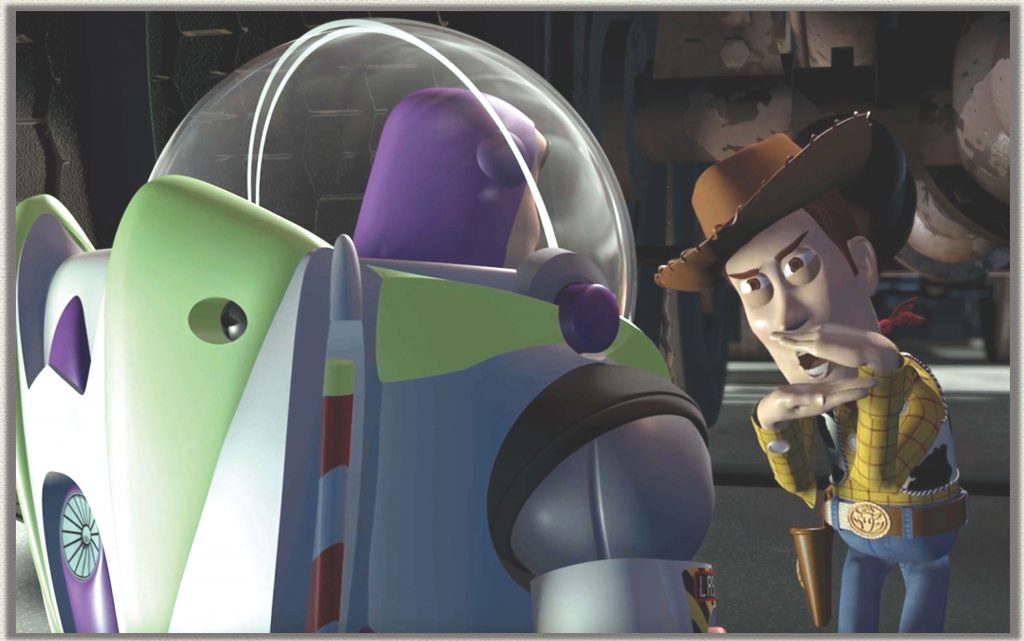
Woody and Buzz end up in the minivan and Woody now has to face the consequence of acting badly, “I can’t show my face without Buzz.” When Buzz appears at the gas station, Woody cries out, “I’m saved!” But Buzz wants revenge and the two get into a fight. Fighting makes their situation worse because they end up getting left behind at the gas station. Woody cries out, “I am a lost toy!” This quote becomes the big external conflict of the story –getting back home is a tangible goal. That is what both Woody and Buzz think the story about. But what the story is really about is Woody and Buzz learning to become friends, true friends.
Next, Woody’s words show the heart of Woody’s internal conflict throughout the movie:
“You showed up…and took away everything that was important to me!”
Ah, jealousy. That is the opposite of selfless friendship. In these words we also see what the stakes are for Woody; his friendship with Andy means the world to him.
Now, like it or not, Buzz and Woody have been thrown into each others’ world, not by choice. Now they’re both in the same predicament, but they still have a choice. Will they help team up and each other? The essence of the “Stay or go” beat is always that the protagonist must make a choice to go on the adventure. Woody isn’t ready to ask for Buzz’s help, but he does make a choice to go. It should be noted that he has a lot of growth ahead, because he gets Buzz to come along by tricking Buzz into thinking the Pizza Planet truck is a spaceship. Buzz falls for it and he chooses to get in the truck. They are off as a pair, and Act I is complete.
Beat #5 – Adventure
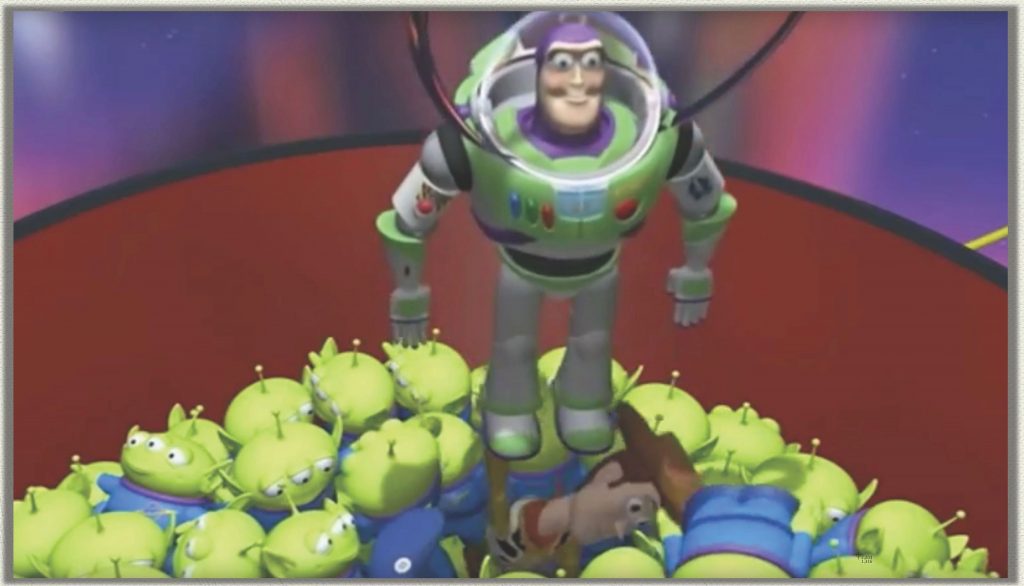
Now they enter Pizza Planet, a weird new world. Note that it is classic story structure when the world turns on its head in the beginning of Act II, and Pizza Planet is a definitely strange place. This is where Buzz and Woody’s saga together really begins. Buzz is chosen by “The Claw” and Woody grabs onto his leg. The two “stick together” as the theme song says.
Beat #6 – I think I love you
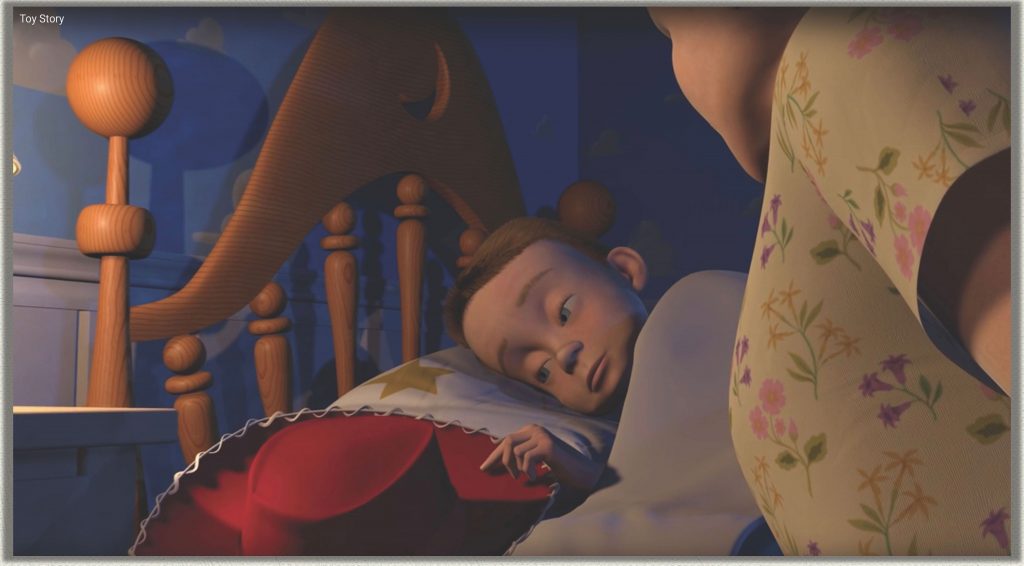
Right at the midpoint and just after it, there are two “love” moments. (In other words, perfectly on time according to classic story structure). Those moments are that we see how Bo Peep and Slink have remained loyal to Woody in their hearts. When Bo Peep hears that Woody is gone, she says, “Oh Slink, I hope he’s okay.” A few minutes later in the movie, Bo Peep sees Andy with his red hat in hand and says into the night, “Woody, if only you could see how much Andy misses you.” This shows that Andy really does still love Woody. Maybe Andy had taken Woody for granted, but he appreciates him now that he is gone.
Beat #7 – Big Trouble
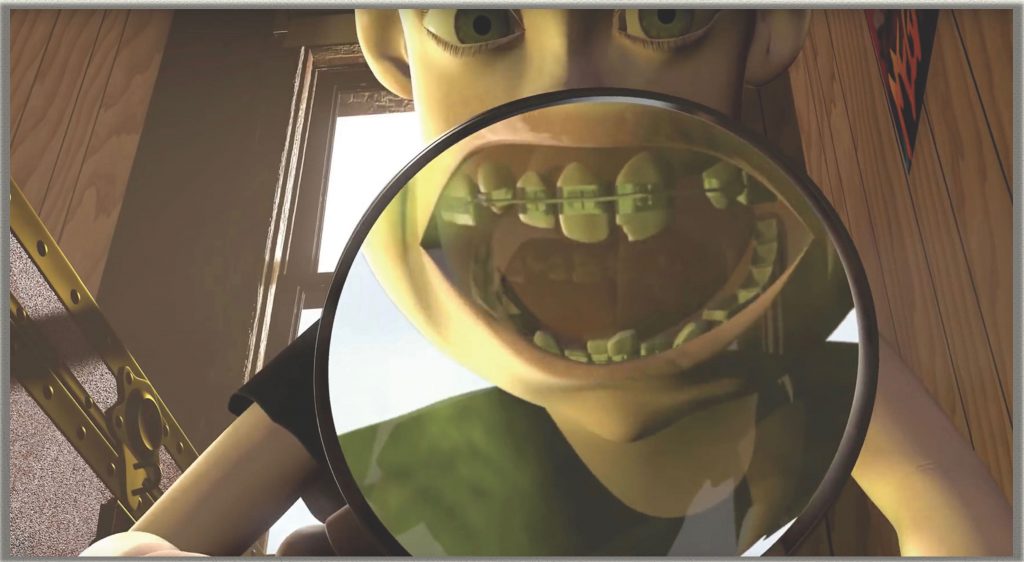
The neighbor kid, Sid, is a pretty scary bad guy, the mutant toys are creepy, and the dog is a killer. Woody and Bus are definitely in big trouble. For the first time, we see Woody and Buzz working together to escape. This is where their friendship begins to take shape.
Beat #8 – Darkest Hour
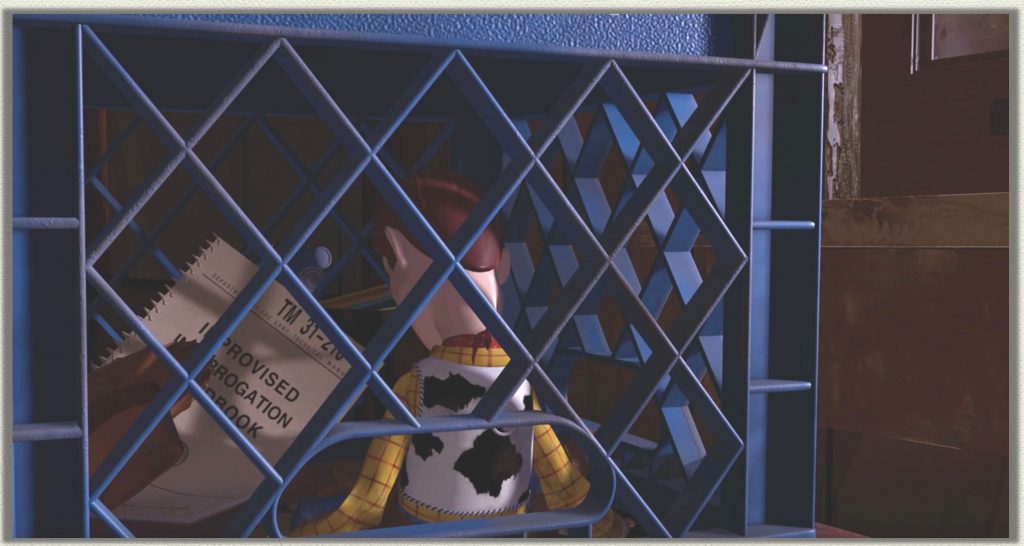
There has been a change in Woody, and in the middle of the night he asks for Buzz’s help. Buzz, however, has become despondent. In this scene, Buzz and Woody both admit their self-doubts to each other, and then they both take turns lifting the other up. Vulnerability is at the heart of real friendship. Woody and Buzz are each here for the other at their low point.
Beat #9 – Spark of the Divine
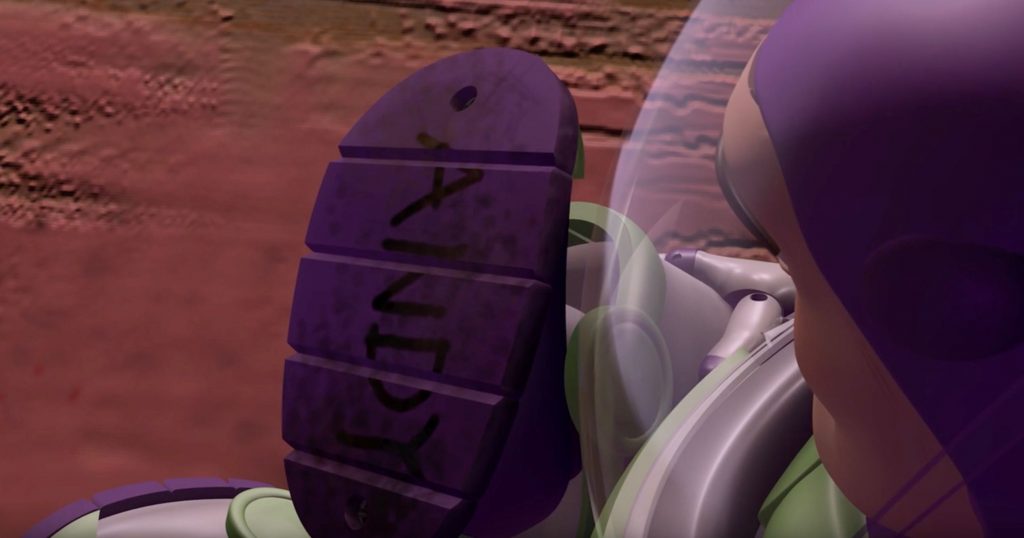
Buzz looks at his shoe where it is labeled “Andy” and realizes that Buzz is right. He is motivated by Andy, but probably more importantly he was motivated by Woody’s words. Buzz climbs onto the window and sees that it is dawn. (Dark and dawn are no accidents in how the moviemakers set up the scene here).
Buzz and Woody are ready to make a run for it together. Then Woody has the genius idea of rallying the mutant toys, who he previously misjudged, “We might have to break a few rules, but if it works it will help everybody.” Again, we see that theme of being selfless come into bloom. Here Woody thinks about the wellbeing of the mutant toys too, not just saving himself.
Beat #10 – Dig deep
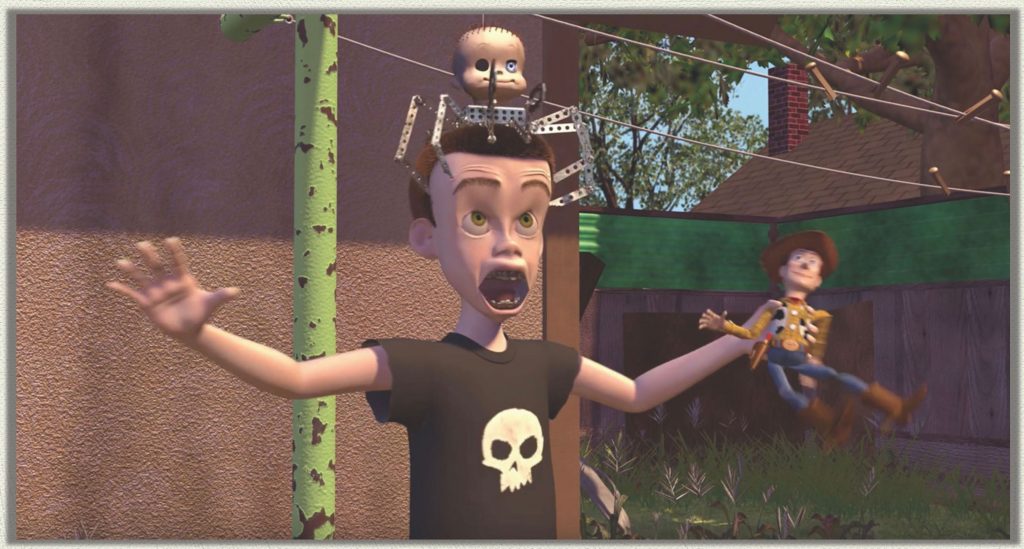
The mutant toys teach Sid a lesson. It is called “comeuppance” in a story when the bad guy’s bad actions come back around, and he gets what he deserves. In Sid, we have seen the polar opposite of selfless friendship; Sid abused his toys. They now stand up to him and teach the lesson. “…Play nice!”
Related: Is yours a redemption story?
Beat #11 – Go Get ‘em

As they chase the moving van, Buzz and Woody each have a moment of sacrificing himself to save the other, showing that their friendship has been cemented and they have learned the lesson of the movie. This selfless act shows how much each has grown. The final triumphant moment is when they go up in the rocket together and Woody now repeats Buzz’s words from the beginning, “You’re flying!” and Buzz responds with Woody’s words from the beginning, “This isn’t flying. This is falling with style!”
Note, it is a “callback,” where you refer to something from the beginning of the story toward the end. Readers and audiences LOVE callbacks. Regarding the theme, however, what’s important here is how both Buzz and Woody have called back to an early moment from the other one. Embracing each other’s words shows acceptance.
Beat #12 – Hero after
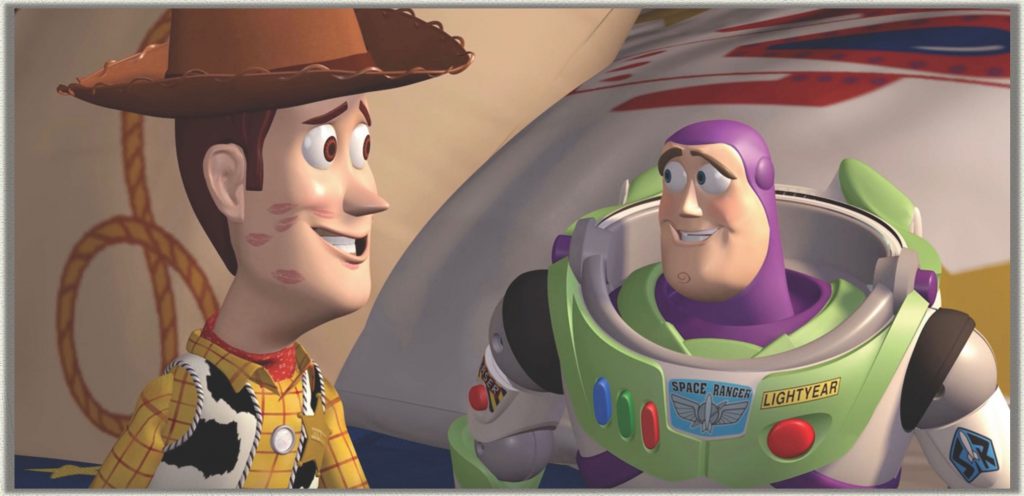
After the adventure, six months pass and Andy’s room now displays signs that he loves both Woody and Buzz. Woody and Buzz seem to have become best friends. The movie comes full circle from the opening to closing scenes when Andy is opening Christmas presents. Woody teases, “Now Buzz, what could Andy possibly get that is worse than you?” We hear barking and Andy exclaims, “Wow, a puppy!”
It’s good that Buzz and Woody became friends when they did because now they will probably both get set aside in favor of the puppy, at least for a while. After this phase of life, Andy will grow up and move on to other interests. Buzz and Woody may have two resisted each other at first, but they came into each others’ lives at the perfect time.
Related article: Story structure and storyboarding two examples: The Sound of Music Movie and The Very Hungry Caterpillar children’s book

Rhonda Lauritzen is the founder and an author at Evalogue.Life – Tell Your Story. Rhonda lives to hear and write about people’s lives. She believes that when you tell your story, it changes the ending., She and her husband Milan restored an 1890 Victorian in Ogden. She especially enjoys unplugging in nature. Check out her books: How to Storyboard, and Every Essential Element. Most recently she was the writing coach of bestselling author, Rob A. Gentile, who wrote Quarks of Light, A Near-Death Experience: What I Saw That Opened My Heart
Questions? We’d love to hear them!



